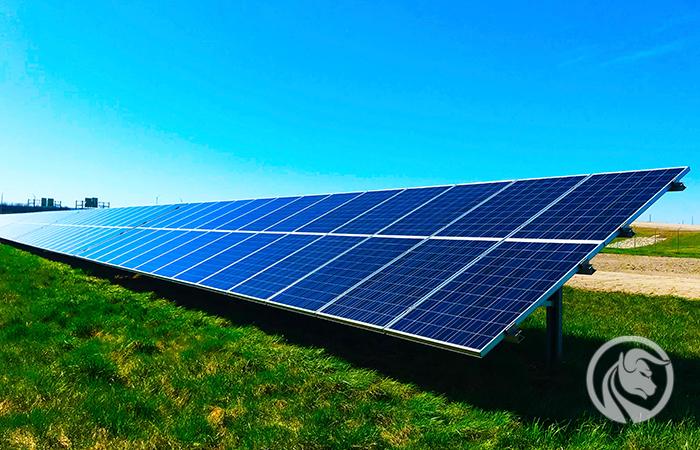The sad reality of green transformation
As hopes grow that the pandemic in developed countries has almost reached its end, there are more and more visions of more "Crazy twenties"analogous to the decade that followed the end of the greatest pandemic of the XNUMXth century. In the era of jazz, consumerism and mass culture were shaped. There were innovations such as cars, radio, films, and time-saving electrical devices. The question of whether this story will repeat itself is very tempting. Cars and radio have been replaced by green transformation as the main factor of change. However, today's stagnation, the greatest in a hundred years, will be difficult to curb. In our opinion, at this stage, there is no indication that the global drive for a carbon-free society will translate into higher productivity gains and higher GDP growth in the long term.
About the Author
 Christopher Dembik - French economist of Polish origin. He is global head of macroeconomic research at a Danish investment bank Saxo Bank (a subsidiary of the Chinese company Geely serving 860 HNW customers around the world). He is also an advisor to French parliamentarians and a member of the Polish think tank CASE, which took first place in the economic think tank in Central and Eastern Europe according to a report Global Go to Think Tank Index. As a global head of macroeconomic research, he supports branches, providing analysis of global monetary policy and macroeconomic developments to institutional and HNW clients in Europe and MENA. He is a regular commentator in international media (CNBC, Reuters, FT, BFM TV, France 2, etc.) and a speaker at international events (COP22, MENA Investment Congress, Paris Global Conference, etc.).
Christopher Dembik - French economist of Polish origin. He is global head of macroeconomic research at a Danish investment bank Saxo Bank (a subsidiary of the Chinese company Geely serving 860 HNW customers around the world). He is also an advisor to French parliamentarians and a member of the Polish think tank CASE, which took first place in the economic think tank in Central and Eastern Europe according to a report Global Go to Think Tank Index. As a global head of macroeconomic research, he supports branches, providing analysis of global monetary policy and macroeconomic developments to institutional and HNW clients in Europe and MENA. He is a regular commentator in international media (CNBC, Reuters, FT, BFM TV, France 2, etc.) and a speaker at international events (COP22, MENA Investment Congress, Paris Global Conference, etc.).
Circular relationship
Both economists and non-economists know that productivity is the long-term determinant of return on capital, and thus interest rates. Antonin Bergeaud, Gilbert Cette and Rémy Lecat have shown that:
"Interest rates also determine the minimum expected return on investment projects and thus the level of productivity required for such investments."
In other words, the fall in real interest rates has allowed weak productive enterprises (including zombie companies) and ventures to make a profit, leading to a slowdown in productivity. Bergeaud, Cette, and Lecat argue that the relationship between productivity gains and real interest rates is not one-way, but rather circular.
The natural disasters that occurred in the world in 2020 finally drew the attention of governments and the private sector to the urgent need to tackle climate change and accelerate the global transition to a low carbon economy. Companies have made huge investments to reduce their carbon footprint. Governments have committed billions to investment incentives for green energy. However, there is no indication that this has led to much higher economic growth and productivity than in the pre-pandemic era. The dominance of negative real interest rates is a signal that decarbonisation and sustainable investment are unlikely to significantly improve productivity, and thus economic growth, at least in the short and medium term.
Check it out: The 5 most profitable ETFs in the renewable energy industry
No technological breakthrough has occurred yet
One of the solutions could be a technological breakthrough, but so far there is no indication of it. The digital revolution that started in the late 90s did not stop the decline in productivity. The green transformation is accompanied by only a few specific innovations. The sad reality of green transformation is that a significant amount of investment is devoted to projects that are not capable of significantly changing the face of the world. Many European countries have decided to abandon nuclear energy, primarily for ideological reasons. This is a risky political choice for our planet. Each such case leads to a greater dependence on more harmful energy sources, such as natural gas or coal. For example, in Germany CO emissions2 increased by 35 million tons per year. In Belgium, the decision to close two-thirds of nuclear power plants between 2022 and 2025 and to replace them with gas-fired power plants will increase CO emissions2 per kWh 74 times. At the current level of technological development, renewable energies are not able to replace conventional energy sources. A distinction should be made between variable renewable energy (wind and solar) and controllable renewable energy (hydropower and biomass). The first category does not contribute to the global shift to low carbon energy as it cannot ensure a stable electricity supply. The second category should be an integral part of the energy mix. In recent years, governments have wasted significant amounts of investing in wind and solar energy. However, for most countries, such energy sources do not make much sense. The allocation of resources as part of a green transition is often wrong.
There are a number of promising technologies, but they are in the prototype stage. It takes many more years, perhaps 5-10 years, for them to find widespread industrial use.
- China has invested billions of dollars in the construction of a nuclear-powered nuclear reactor by 2030. Thorium is a metal element with low radioactive radiation, discovered in Norway in 1829. It has more advantages than uranium: 1) It is four times more and can be found at all over the world; 2) produces less pollution. 83% of them are neutralized within 10 years, the rest - within 300 years; 3) it is safer. It solidifies quickly when exposed to air and does not emit any radioactive gas. Some European countries have also undertaken track research, but their budgets are much smaller.
- Many countries are considering the possibility of replacing the so-called fossil hydrocarbons. green hydrogen. Green hydrogen is a solution for energy storage based on renewable energy. It has two disadvantages: the first is a low efficiency of 25-30%. This means that more than two-thirds of the originally produced renewable electricity disappears in the process; the second disadvantage is the high cost of this solution. Green hydrogen is four times more expensive than blue hydrogen produced from fossil sources. This explains why global green hydrogen production is marginal - less than 5% of total production. Improving this technology can take years and requires extensive research and investment.
- We have already mentioned that variable renewable energy is not a particularly useful part of the energy mix. However, this situation may change within 5-10 years thanks to technological advances. Large industrial projects are trying to solve the problem of interruptions in the supply of wind as an energy source. Instead of increasing the number of offshore wind farms individually connected to national grids (which increases costs and reduces system efficiency), the Dutch electricity transmission operator TenneT is promoting the idea of creating artificial islands in the North Sea that would serve as centers for optimal electricity distribution in neighboring countries. This project is a pilot project and its implementation will take years.
Strong row
The industrial sector is fully aware of the challenges associated with the energy transformation. However, the private sector will not be able to cover the costs of this process on its own. There is no historical precedent under which such a shift could have been achieved other than through some form of wide-ranging political intervention, massive public investment, and a planned economy. The first step in this direction is the recovery plans to recover from the Covid-19 recession. More than a third of the French recovery plan deals with the energy transition. The United States has allocated more than $ 8 billion to the production of hydrogen, primarily blue, as part of its infrastructure plan - and it's not over yet. However, if we want green transformation to become synonymous with higher productivity growth and higher GDP growth, we must first of all ensure the optimal distribution of resources. So far this has not happened.
In our opinion, negative real interest rates are an economic signal that the green transformation requires finding a different path. He stresses that in order to solve the green deficit, we need to find a productivity and model with higher marginal productivity, rather than a political narrative of change that is not a real change at all.






















![Forex Club – Tax 9 – Settle tax on a foreign broker [Download the Application] Forex Club - Tax 9](https://forexclub.pl/wp-content/uploads/2024/02/Forex-Club-Podatek-9-184x120.jpg?v=1709046278)
![Trading View platform – solutions tailored to the needs of traders [Review] trading view review](https://forexclub.pl/wp-content/uploads/2024/03/trading-view-recenzja-184x120.jpg?v=1709558918)
![How to connect your FP Markets account to the Trading View platform [Guide] fp markets trading view](https://forexclub.pl/wp-content/uploads/2024/02/fp-markets-trading-view-184x120.jpg?v=1708677291)
![How to invest in ChatGPT and AI? Stocks and ETFs [Guide] how to invest in chatgpt and artificial intelligence](https://forexclub.pl/wp-content/uploads/2023/02/jak-inwestowac-w-chatgpt-i-sztuczna-inteligencje-184x120.jpg?v=1676364263)


![WeWork – the anatomy of the collapse of a company valued at $47 billion [WeWork, part II] wework bankruptcy story](https://forexclub.pl/wp-content/uploads/2024/04/wework-bankructwo-historia-184x120.jpg?v=1711729561)
![Adam Neumann – the man who screwed up Softbank [WeWork, part AND] adam neumann wework](https://forexclub.pl/wp-content/uploads/2024/04/adam-neumann-wework-184x120.jpg?v=1711728724)





![How to transfer shares to another brokerage office [Procedure description] how to transfer shares to another brokerage house](https://forexclub.pl/wp-content/uploads/2024/03/jak-przeniesc-akcje-do-innego-biura-maklerskiego-184x120.jpg?v=1709556924)

![The most common mistakes of a beginner trader - Mr Yogi [VIDEO] Scalping - The most common mistakes of a beginner trader - VIDEO](https://forexclub.pl/wp-content/uploads/2024/03/Scalping-Najczestsze-bledy-poczatkujacego-tradera-VIDEO-184x120.jpg?v=1711601376)
![Learning patience: No position is also a position - Mr Yogi [VIDEO] Scalping - Learning patience - No position is also a position - VIDEO](https://forexclub.pl/wp-content/uploads/2024/03/Scalping-Nauka-cierpliwosci-Brak-pozycji-to-tez-pozycja-VIDEO-184x120.jpg?v=1710999249)
![When to exit a position and how to minimize losses - Mr Yogi [VIDEO] Scalping - When to exit a position and how to minimize losses - VIDEO](https://forexclub.pl/wp-content/uploads/2024/03/Scalping-Kiedy-wyjsc-z-pozycji-i-jak-minimalizowac-straty-VIDEO-184x120.jpg?v=1710336731)
















